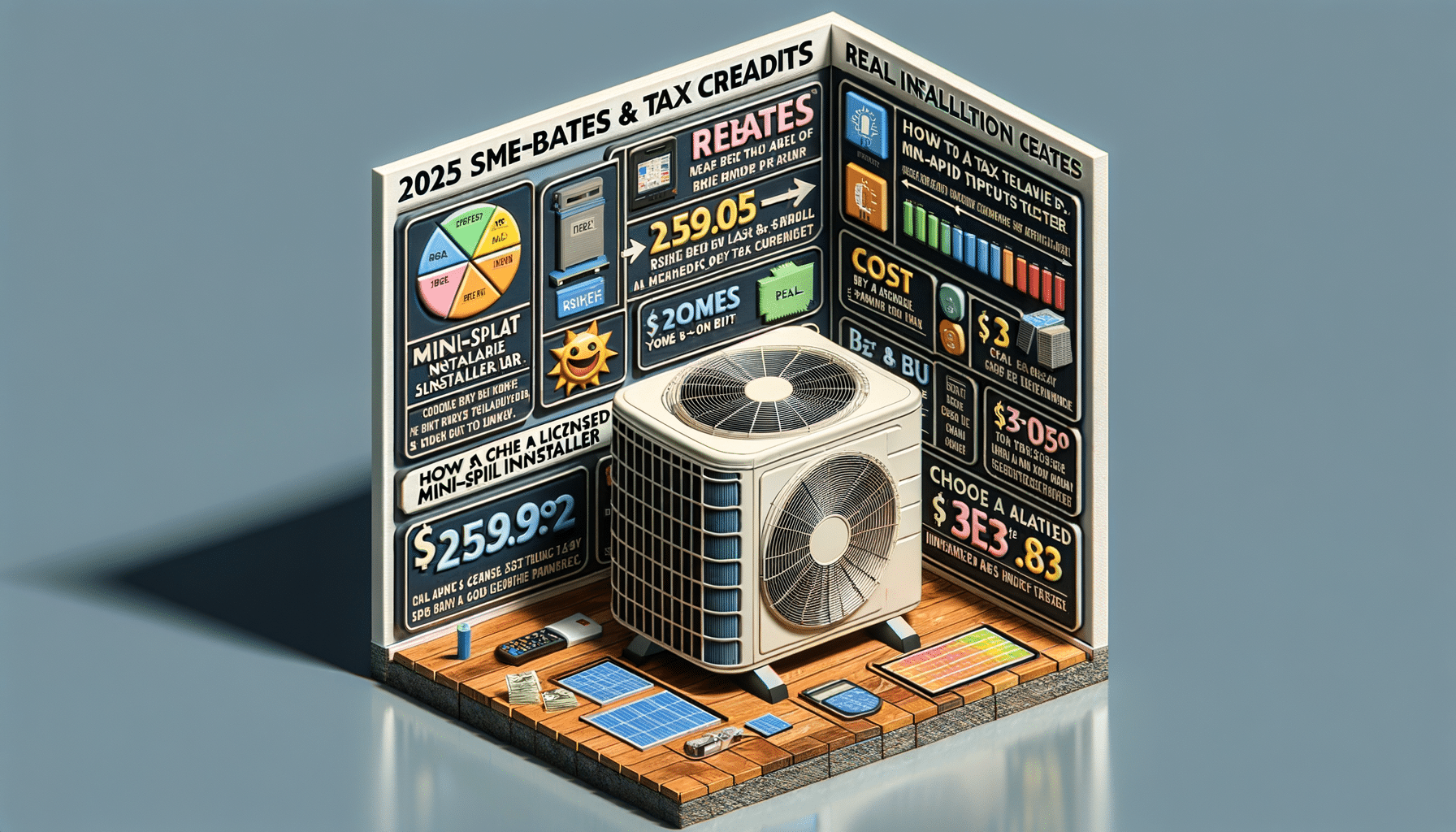
Mini-Split Installation Cost & Rebates Guide 2025
Introduction to Mini-Split Systems and Their Benefits
As we move into 2025, the demand for energy-efficient heating and cooling solutions continues to rise. Mini-split systems have gained popularity due to their ability to provide targeted climate control while being energy efficient. Unlike traditional HVAC systems, mini-splits do not require ductwork, making them a versatile option for many homes and businesses. This article explores the 2025 mini-split rebates and tax credits, real installation costs based on zone and BTU, and how to choose a licensed mini-split installer near you.
2025 Mini-Split Rebates and Tax Credits
In 2025, homeowners can take advantage of several federal and state incentives aimed at promoting energy efficiency. These rebates and tax credits significantly reduce the initial cost of installing mini-split systems. The federal government offers tax credits for energy-efficient home improvements, which include mini-split installations. These incentives are part of a broader initiative to reduce carbon footprints and encourage the use of renewable energy sources.
State-specific rebates vary, with some states offering more generous incentives than others. To maximize savings, it’s essential to research the available programs in your area. Typically, rebates are contingent on meeting specific energy efficiency standards, so it’s crucial to choose a system that qualifies.
Here are some steps to ensure you benefit from these rebates:
- Check eligibility criteria for federal and state programs.
- Ensure your mini-split system meets the required energy efficiency standards.
- Submit necessary documentation promptly to claim your rebates and tax credits.
Real Installation Cost by Zone & BTU
The cost of installing a mini-split system can vary widely depending on several factors, including geographic location and the system’s BTU capacity. Generally, the installation costs are influenced by the complexity of the installation, the number of indoor units required, and the specific needs of the space being conditioned.
In colder climates, systems with higher BTU ratings might be necessary to ensure efficient heating during winter months. Conversely, in milder climates, lower BTU systems may suffice, potentially reducing the overall cost. The following provides a general breakdown of costs:
- Zone 1 (Warm Climates): Typically lower installation costs due to less demand for high BTU systems.
- Zone 2 (Moderate Climates): Mid-range costs as systems need to balance heating and cooling efficiently.
- Zone 3 (Cold Climates): Higher installation costs due to the need for systems with greater heating capacity.
Understanding these cost variations can help homeowners budget appropriately and choose a system that balances cost with performance.
How to Choose a Licensed Mini-Split Installer Near You
Selecting the right installer is crucial to ensure your mini-split system operates efficiently and reliably. A licensed installer not only ensures compliance with local building codes but also provides peace of mind that the installation is performed correctly.
Here are some tips for choosing a qualified installer:
- Verify the installer’s license and insurance to ensure they are properly credentialed.
- Seek recommendations from friends, family, or online reviews to find reputable installers in your area.
- Request multiple quotes to compare pricing and services offered by different installers.
- Inquire about the installer’s experience with mini-split systems specifically, as this can impact the quality of the installation.
By taking these steps, you can find an installer who will ensure your mini-split system is installed correctly and efficiently.
Conclusion: Making an Informed Decision
Investing in a mini-split system in 2025 can be a wise decision for homeowners looking to enhance their home’s energy efficiency and comfort. By understanding the available rebates and tax credits, real installation costs, and choosing a qualified installer, you can make an informed decision that meets your needs and budget. With careful planning and research, you can enjoy the benefits of a mini-split system while contributing to a more sustainable future.


